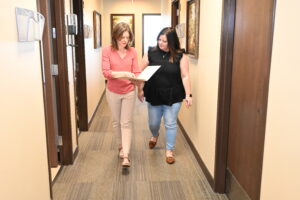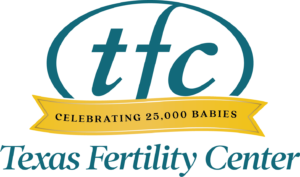Dr. Munch explains hysteroscopic procedures for female infertility
 Uterine issues, such as fibroids, polyps and adhesions, can cause fertility problems. Dr. Erika Munch performs hysteroscopic procedures for female infertility to diagnose and treat these issues, removing physical obstacles that cause infertility. Our San Antonio fertility specialist uses this minimally invasive surgery to help many patients achieve their family-building goals.
Uterine issues, such as fibroids, polyps and adhesions, can cause fertility problems. Dr. Erika Munch performs hysteroscopic procedures for female infertility to diagnose and treat these issues, removing physical obstacles that cause infertility. Our San Antonio fertility specialist uses this minimally invasive surgery to help many patients achieve their family-building goals.
“Hysteroscopies are widely used to remove uterine adhesions, fibroids and endometrial polyps, and to resect uterine septums,” Dr. Munch says. “The procedure can also be used as a diagnostic test to evaluate the uterus prior to any embryo transfer. These surgeries are an important asset in our fertility care toolbox.”
Learn about hysteroscopic procedures for female infertility from Dr. Munch
Dr. Munch notes that hysteroscopies are valuable procedures for both the reproductive endocrinologist and the patient.
“Hysteroscopy is an excellent tool for reproductive endocrinologists and patients,” she says. “Hysteroscopic procedures are the best way to address a lot of potential issues that may come up during a fertility evaluation, such as polyps, adhesions, septums or fibroids. They are nearly always done on an outpatient basis, meaning patients can go home the same day. Since there are no incisions, the recovery is quick. Many patients go back to work the following day.”
So, what should patients know about hysteroscopic procedures for female infertility? During a hysteroscopy, the physician inserts a thin, flexible, instrument into the vagina. It is lighted and telescope-like, with a camera on one end. This allows the doctor to carefully examine the uterine cavity. For treatment, the surgeon attaches small instruments to the hysteroscope.
Hysteroscopic procedures for female infertility are commonly performed for several reasons.
• Diagnosing uterine issues
• Performing biopsies
• Removing uterine fibroids or polyps
• Removing adhesions
• Resecting uterine septums
• Correcting uterine abnormalities
This San Antonio fertility specialist performs most hysteroscopies on an outpatient basis, but occasionally, more complicated procedures require hospitalization. Since there are no incisions, recovery time is short – usually one to two days.
“Hysteroscopy allows the fertility doctor to visualize the uterus,” Dr. Munch says. “It’s the most effective, least invasive way to address structural uterine issues, such as adhesions and the subtype of fibroids that impact fertility.”
Our San Antonio fertility specialist can correct obstacles that are affecting your fertility
If you are dealing with infertility, Dr. Munch welcomes the opportunity to help you. She is accepting new patients and looks forward to collaborating with you to diagnose and treat your fertility issues using every tool in her toolbox, including hysteroscopic procedures for female infertility. You can rely on her skill and compassion during your journey to parenthood. Contact us for an appointment.



